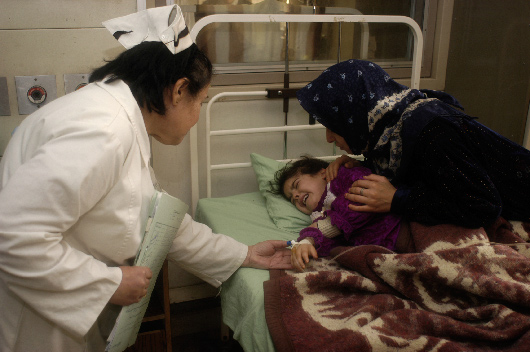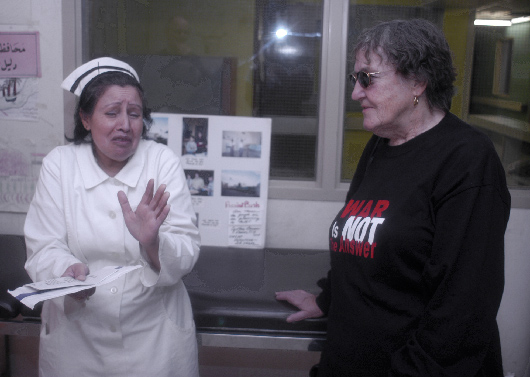Night of a Thousand Stars

Night of a Thousand Stars
From Night of a Thousand Stars and Other Portraits of Iraq (Nazraeli Press: 2006)
At 11:30 p.m. on the night of Jan. 17, 1991, the first Tomahawk missile fired in the Gulf War left its launch platform aboard the U.S.S. San Jacinto in the Red Sea. The missile rose eastward, crossed the Saudi Arabian desert, and then descended, roughly one hour and 600 miles later, on the city of Baghdad. The Tomahawk was soon joined by more than 100 cruise missiles from seven U.S. warships in the Persian Gulf, including two nuclear-powered submarines. The rockets streaked into the city shortly before 1 a.m., as air-raid sirens and thunderous explosions shook Iraqis from sleep. The bombers—Kuwaiti, French, U.S. and British—followed.
At Sadaam Pediatric Hospital, in the second-floor cancer ward, children who were able climbed from their beds and gathered at the windows, screaming. Rasmeyah Abdul Saadah ran from the nurse’s station and found them in tears.
“What’s the matter?” she shouted, rushing to the window.
“Bombs are falling on the city,” the children cried. They pointed to the distant, but growing fires. “We will be killed!”
That was nearly 12 years ago, but Rasmeyah says she remembers it—the red-and-green glowing sky, the plumes of the rockets racing overhead, and the stricken, pleading faces of the children—as if it were yesterday.
It may as well have been yesterday. It’s late February now, the year is 2003, and the U.S. is again threatening to bomb Baghdad.
What could she say? Would the truth have eased their suffering? “I told them,” she explains, “Don’t be silly, those are not missiles. They are falling stars.”
And it was true. Where, only moments before, missiles and bombs rained over the city, the sky was now filled with stars that fell glittering to earth.
Can’t you see them? They turn to the windows, at first doubtful, but the beauty of it overwhelms them. They can hardly believe their eyes. The stars are so near at hand, so lovely, so radiant, so golden. They gleam as diamonds, as emeralds, as pearls. They’re really just specks of dust, but they outshine all the fixed stars in the universe. Their lives are fragile, momentary, and glorious. It’s their passing, so near at hand, that makes them burn so brightly. Close your eyes for even the briefest instant and you’ve missed it. So you elbow for a better view, maybe more roughly than you should, but it hardly matters, since everyone else is elbowing, too. You stand on your toes, the better to see.
You point out the ones that burn brightest. You call out to the others, hoping they’ll like yours best. There’s one! And over there another! And more still, falling from the east, from the west, from everywhere. They come and come and come. It’s exhausting, trying to catch them early, when they’re just pinpoints, and follow them all the way to where they burn out under the horizon. Every few seconds there’s a new one. You can hardly count them, and always there’s more. It’s too much. It’s more than you can bear. You grow tired. Your legs are tired. Your arms ache. Your throat hurts from so much shouting. Your eyes burn. It’s hard to keep them open. You can’t watch anymore, you want to lie down, you have to sleep, you’re so tired, but you are happy. Even when you close your eyes, you will see them still. You will follow them into the sky, even in your sleep.
“In all your life,” Rasmeyah told the children as she tucked them into bed, “you will never see a night as beautiful as this.”
 The End
The End
06/01/11 | 0 Comments | Night of a Thousand Stars